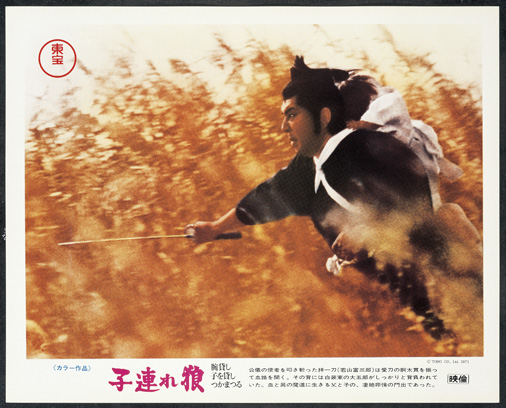Shogun Assassin
The intention now is to present it as a film worth serious consideration …
It’s a bloody, uncompromising funfair of bloodletting and dismemberment, and statements to this effect have previously been worn like badges of honour. With Eureka Entertainment’s Blu-Ray release, however, it seems there’s been a change in tack. Gone are the trumpetings of massive body counts and assurances of uncensored butchery, so too the gleeful exclamation of Ogami’s tendency to ‘whip out his sword and relieve his victims of their heads’. Most likely it’s a reflection of the film’s relative tameness in the context of what’s available today, for while the violence remains undoubtedly gratuitous (limbs fly and heads roll; men are reduced to stumps), with films such as Saw (2004) and Hostel (2005) employing a level of gore and carnage so graphic and outlandish they’ve given rise to the term ‘torture porn’, it’s no longer the horror show it once was.
But perhaps there’s another reason. Perhaps it’s rather that the intention now is to present it as a film worth serious consideration, one that’s outgrown adolescent obsessions with graphic violence.
And why not? As one of the original video nasties, Shogun Assassin has proved itself far more enduring than some of its peers. Titles like I Spit On Your Grave (1978) and Cannibal Holocaust (1980) may be well known to the masses, but Shogun Assassin, like The Texas Chainsaw Massacre (1974) and The Evil Dead (1981), is a film that’s forced its way into the mainstream. Among its legion of fans it counts Quentin Tarantino and East-coast Hip-Hop conglomerate The Wu Tan Clan, both of whom have directly referenced the film in their work. In the case of Tarantino it came in the form of Kill Bill Vol. 2 (2004), in which the child of Bill and The Bride watches it at bedtime, as if a grotesque fairytale; and that’s without mentioning the clear influence it had on the hyper-violence of both KB instalments. Before that came the 1995 GZA album ‘Liquid Swords’, throughout which Wu Tan producer, RZA (who, incidentally, scored the Kill Bill films), places numerous excerpts of the infant’s narration, as well as sampling portions of Lindsay and Lewis’ score.
In both cases we find Shogun Assassin to have meant more to its appropriators than might be credited to your average video nasty. The action and violence can’t be ignored, for the choreography provides some wonderfully blunt and brutal set pieces, but clearly they took more from it than the mere thrill of watching cranium-splitting Katanas (though what a thrill it is). The question is: what?
 Learning on Screen
Learning on Screen
